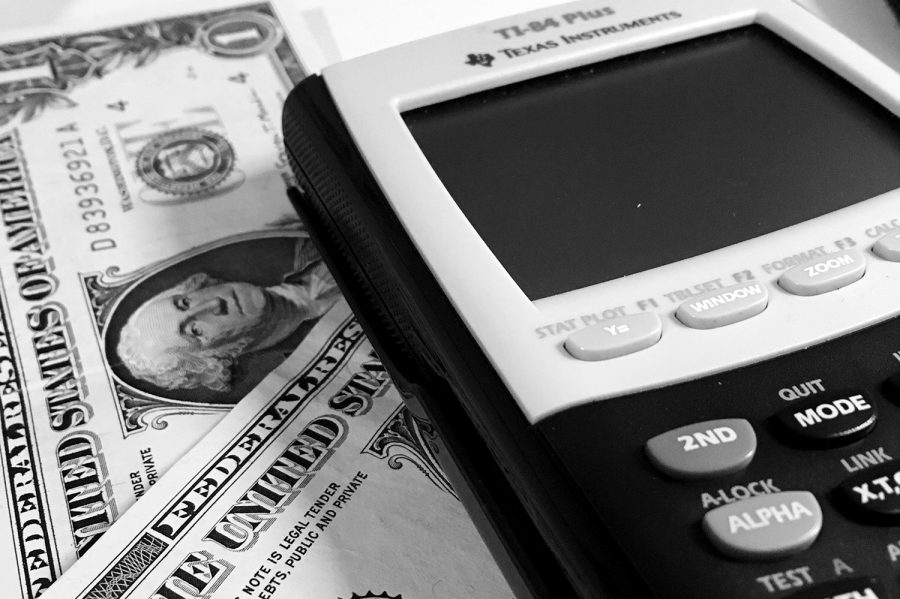A Calculated Advantage
Not all calculators are created equal, and the ability to buy the best is a distinct educational advantage.
Texas Instruments controls the lion’s share of the calculator market, and their profit margins make it unlikely that things will change anytime soon.
I’ve always wondered why the graphing calculator I use — a TI-84 — looks like it’s straight out of the 90s. Our phones have evolved with the times, so why haven’t calculators? Turns out, Texas Instruments is merely following the formula.
TI has a little-noted monopoly in the calculator industry, controlling about 80% of the market. Other manufacturers like Casio and Sharp have some share in the market, but taking a look around NASH, I hardly see anyone who doesn’t use a TI. They’re well-known and recommended by most teachers, so why would students use anything else?
It’s estimated that TI’s calculators cost about $15-20 to make, but the company sells them at a 50% profit margin, which would probably explain why the design of the calculator hasn’t changed much. They have almost no incentive to improve the product.
For comparison, the rest of the electronics industry has a profit margin averaging 6.7%. A TI-84 is $101 on Amazon, which seems highly unreasonable given their production cost. And that’s only one of the simpler models available. TI-89s and TI-Nspires are well above $100.
As students progress to more advanced math classes, the assumption is that they have already purchased a graphing calculator. Apparently, shelling out $100+ on a calculator doesn’t seem to be much of a problem for most NA students, but it can be detrimental to students in low-income areas.
It’s almost impossible to avoid buying into Texas Instruments’ tight grip on the education industry. In classes like precalculus and calculus, teachers often teach calculator functions to either a TI-84, 89, or in some cases, the TI-Nspire. I take AP Statistics this year, and as the NA Program of Studies says, “It will be necessary for each student to have a TI-83/TI-83+ calculator. This calculator will be used to produce, analyze, and interpret data.” Some of the functions we need to use aren’t available on scientific or four-function calculators. Additionally, thought we learn how to calculate the formulas by hand, the class moves at such a pace that it is necessary to have a graphing calculator — evidently, a TI-brand one.
But here is where the picture grows complicated. As Texas Instruments’ line of calculators gets more expensive, they come with a larger range of functions — some of which can be much more beneficial. For instance, the AP Calculus Exam requires students to have a graphing calculator for a portion of the test, and students who own high-end calculators stand to benefit disproportionately. Shockingly, it’s an open secret, as AP Calc teacher Mrs. Volpe can attest.
“I was at the AP conference, and they even announced that kids who have the TI-89 have the advantage [on the AP test],” Volpe recently said.
The TI-Nspire models are among the most advanced of the Texas Instruments calculators and have the capability to display PDF files and do algebraic operations with exact answers. Several NASH students own an Nspire and claim that it has helped them on standardized tests, where, surprisingly, Nspires are permitted.
Volpe added, ‘[Testing organizations] are trying to fight the difference because [the test] would be unfair to students who don’t have one, but not much has changed.”
Clearly, there’s a disparity between a student’s investment in one of these calculators and their potential success level. The fact that TI-Nspires are allowed on standardized tests proves that such exams don’t simply measure intelligence — wealth is an enormous, but often overlooked factor. Yet, sadly the situation seems like just another of the inequalities to which we’ve become accustomed within the education system. Of late, the media landscape has been filled with the ways by which wealth can secure educational advantages.
But in relation to calculators in particular, there’s a fact that can’t be ignored. They aren’t a cheap investment, but they certainly pay off in the long run. I bought my TI-84 in 8th grade, and the very same calculator has lasted me five years. My iPhone 6s, purchased four years ago, is barely functional now. While I’m at a disadvantage in relation to my peers who own better calculators, things could be a lot worse. I’m fortunate that I could afford my TI-84 in the first place.

Anjana Suresh is a senior at NASH. She is a part of the rowing team and has been involved with Key Club. She enjoys eating pickles, playing solitaire, and meeting new people.


